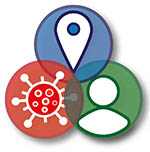
What messages and communication strategies are effective at increasing and maintaining support of measures?
Messages and communications are most effective at increasing or maintaining support when they are clear and consistent. Evidence for this comes from research in multiple industries.
Frequent changes to rules or differences in rules across various settings and regions can be confusing for staff and the public. These changes and differences undermine support of mitigation measures. For example, guidance for travel early in the pandemic was generally seen as ‘easy’ to understand. Complications emerged where guidance and rules for transport was different to other environments, such as wearing face coverings.
There are four key recommendations as to what influences people’s responses to messaging for managing risks and preventing infectious diseases:
- Engage communities in development of messaging,
- Address uncertainty immediately and with transparency,
- Focus on unifying messages from evidence-based sources, and
- Frame messages aimed at increasing understanding, social responsibility, and personal control.
Keep using reminders related to the fit, handling and hand sanitising of face coverings. Provide messaging including visual prompts of effective versus ineffective face covering practices.
Use simple and familiar language to help ensure clarity, ease of understanding and consistency so information is accessible. Provide translations and accessible formats where needed.
Lead by example to build trust.






0 Comments